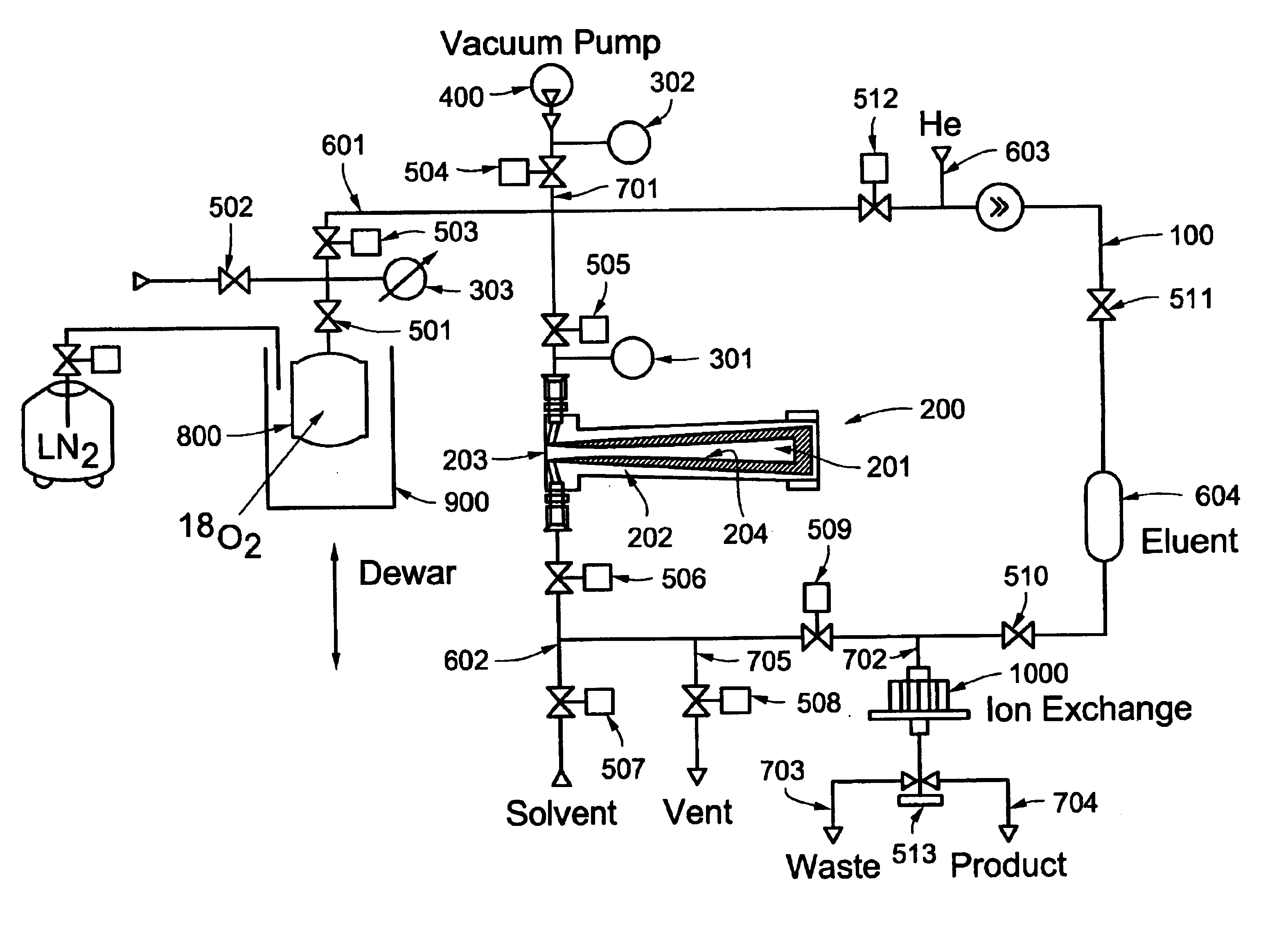System and method for the production of 18F-Fluoride
- Summary
- Abstract
- Description
- Claims
- Application Information
AI Technical Summary
Benefits of technology
Problems solved by technology
Method used
Image
Examples
Embodiment Construction
The invention presents an approach that produces 18F-Fluoride by using a proton beam to irradiate 18Oxygen in gaseous form. The irradiated 18Oxygen is contained in a chamber that includes at least one component to which the produced 18F-Fluoride adheres. A solvent dissolves the produced 18F-Fluoride off of the at least one component while the at least one component is in the chamber. The solvent is then processed to obtain the 18F-Fluoride.
FIG. 1 is a diagram illustrating an exemplary embodiment of a system according to the inventive concept. As shown, the 18F-Fluoride forming system 1 includes a leak-tight looping tube 100 connecting a target chamber 200 to a vacuum pump 400 and to various inlets (601-604) and outlets (701-705). The looping tube 100 has at least valves (501-513) that separate various segments from each other. Preferably pressure gauges (301-303) are connected to the looping tube 100 to permit measuring the pressure within various segments of the looping tube 100 at...
PUM
 Login to View More
Login to View More Abstract
Description
Claims
Application Information
 Login to View More
Login to View More - R&D
- Intellectual Property
- Life Sciences
- Materials
- Tech Scout
- Unparalleled Data Quality
- Higher Quality Content
- 60% Fewer Hallucinations
Browse by: Latest US Patents, China's latest patents, Technical Efficacy Thesaurus, Application Domain, Technology Topic, Popular Technical Reports.
© 2025 PatSnap. All rights reserved.Legal|Privacy policy|Modern Slavery Act Transparency Statement|Sitemap|About US| Contact US: help@patsnap.com



